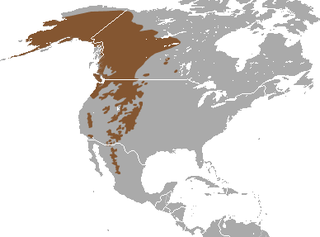
Original source: Base map derived from File:BlankMap-World.png. Distribution data from IUCN Red List
Author: Chermundy
Montane shrew
Order : Insectivora
Family : Soricidae
Subfamily : Soricinae
Species : Sorex monticolus
The Montane shrew is listed as Least Concern (LR/lc), lowest risk. Does not qualify for a more at risk category. Widespread and abundant taxa are included in this category, on the IUCN Red List of Threatened Species
Montane shrew habitats
Subarctic forestSome facts about the
Montane shrew
Adult weight : 0.006 kg (0.0132 lbs)
Female maturity :365 days
Weaning : 21 days
Litter size : 6
Litters per year : 1
Facts about the montane shrew
"(1) "The montane shrew (Sorex monticolus) is probably the most common and widespread species in the state (New Mexico).
Other Comments The name Sorex monticolus is from the Latin mons (mountain) and colere (to inhabit) (Smith & Belk, 1996).
The montane shrew, Sorex monticolus, is native to Alaska, western Canada, and much of the western United States. (Full text)
=20 The montane shrew, Sorex monticolus, is also called the Dusky Shrew.
Sorex monticolus (Montane Shrew) is much like nanus, but it is larger: total length usually measures 100 millimeters or more , and the skull is more than 15 mm in length.
COLORADO 1994: In Colorado, the montane shrew is most frequently associated with the mesic habitats of aspen stands, willow thickets, moist openings in subalpine
Montane shrews are active throughout the year, during both day and night. (Full text)
Montane shrews are greatly affected by temporal variation in ground cover.
More animals beginning with M
